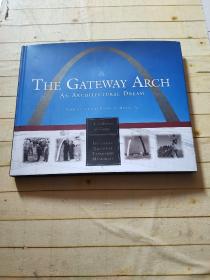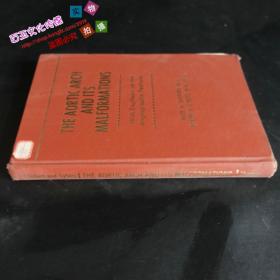
现货The Dada Archivist: Hannah Hoech, Kurt Schwitters and Berlin Dada[9781800798892]
¥ 812 九五品
仅1件
作者Weikop, Christian ; Barchan, Stina
出版社Peter Lang Ltd, International Academic Publishers
ISBN9781800798892
出版时间2023-10
装帧精装
纸张其他
页数294页
正文语种英语
上书时间2024-06-05
- 最新上架
商品详情
- 品相描述:九五品
- 商品描述
- With astuteness and feeling, Stina Barchan captures the wonderful friendship between Hannah H?ch and Kurt Schwitters and their artistic affinities. She deftly traces how each threaded together archival treasures and different forms of three-dimensional montage in their homes and workspaces to create living art in difficult times. (Maud Lavin, Professor Emerita, School of the Art Institute of Chicago, and author of Cut with the Kitchen Knife: The Weimar Photomontages of Hannah H?ch) Focusing on Hannah H?ch's archive (rather than her artworks) and her post-Second World War activities (rather than the Dada period), Stina Barchan bypasses conventional approaches to the artist and compellingly argues that H?ch's holistic approach to art and life in this period was among the most fundamentally subversive and radical of her career. (Adrian Sudhalter, author of Dadaglobe Reconstructed) The archive of the German artist Hannah H?ch (1889-1978) has long been an important source of material for historians researching the interwar avant-garde and artists associated with Berlin Dada. This book explores H?ch's practices of organisation when assembling the documents in her house outside Berlin from 1939 until her death. Through extensive research, the author argues that H?ch's archive should be considered not just a collection of documents but a work in its own right, intimately connected with the artist's daily life. Noting the importance of understanding the mechanisms of this work, the book suggests that H?ch took charge of both preserving and exploring the possibilities of Dada long after the group had been officially dissolved. The file that H?ch assembled on her friend, the artist Kurt Schwitters (1887-1948), plays an important part in the book, its content revealing how domestic habits infused both artists' practices. Juxtaposing H?ch's archive and Schwitters's Merzbau, the author argues for an interactive movement between the two that has fundamental implications for how we understand both artists' oeuvres.
相关推荐
-
![现货Dada[9780714869407]](https://www0.kfzimg.com/sw/kfz-cos/kfzimg/17733071/45753959cddf7bf2_s.jpg)
现货Dada[9780714869407]
九五品上海
¥ 161.00
-

In the shadow of the arch
八五品上海
¥ 10.00
-

凯旋门 THE ARCH OF TRIUMPH
八五品衡水
¥ 200.00
-

THE GATEWAY ARCH AN ARCHITECTURAL DREAM
九品北京
¥ 68.00
-

arch the asian magazine of architecture
九品北京
¥ 80.00
-

The Gateway arch an architectural Dream
八品上海
¥ 280.00
-

IN THE SHADOW OF THE ARCH
九品惠州
¥ 5.00
-

THE AORTIC ARCH AND ITS MALFORMATIONS
八品北京
¥ 150.00
-

IN THE SHADOW OF THE ARCH
八品桂林
¥ 10.00
-

特价现货!DADA系列:夏加尔
九品鹤壁
¥ 12.44
— 没有更多了 —
![现货The Dada Archivist: Hannah Hoech, Kurt Schwitters and Berlin Dada[9781800798892]](https://www0.kfzimg.com/sw/kfz-cos/kfzimg/17733071/ad77c437263960dd_b.jpg)

![现货Materials and Technologies of Modern Production[9783036401683]](https://www0.kfzimg.com/sw/kfz-cos/kfzimg/17733071/5fd2824531e165d7_s.jpg)
![现货Introduction to Container Ship Operations and Onboard Safety[9781032155425]](https://www0.kfzimg.com/sw/kfz-cos/kfzimg/17733071/58b7ff43ef7909ee_s.jpg)
![现货Electrophosphorescent Materials and Devices[9789814877343]](https://www0.kfzimg.com/sw/kfz-cos/kfzimg/17733071/18cc1d77bcb7b488_s.jpg)
![现货Organic Semiconductors for Optoelectronics[9781119146100]](https://www0.kfzimg.com/sw/kfz-cos/kfzimg/17733071/24c85a750c708964_s.jpg)
![现货Advances in Food Rheology and Its Applications[9780081004319]](https://www0.kfzimg.com/sw/kfz-cos/kfzimg/17733071/e0c11603c9119d4d_s.jpg)
![现货Advanced Materials and Sustainable Technologies[9783035727562]](https://www0.kfzimg.com/sw/kfz-cos/kfzimg/17733071/dced675333874c48_s.jpg)
![现货Advanced Materials and Manufacturing Engineering II[9783035712681]](https://www0.kfzimg.com/sw/kfz-cos/kfzimg/17733071/660ccfae75fa8d3e_s.jpg)
![现货Materials in Machinery and Construction[9783035718119]](https://www0.kfzimg.com/sw/kfz-cos/kfzimg/17733071/6f402060775e9daa_s.jpg)
![现货Cereal Grain Quality (Softcover Reprint of the Original 1st 1996)[9789401071772]](https://www0.kfzimg.com/sw/kfz-cos/kfzimg/17733071/f93ca1c96a97403a_s.jpg)
![现货The Dada Archivist: Hannah Hoech, Kurt Schwitters and Berlin Dada[9781800798892]](/dist/img/error.jpg)




以下为对购买帮助不大的评价